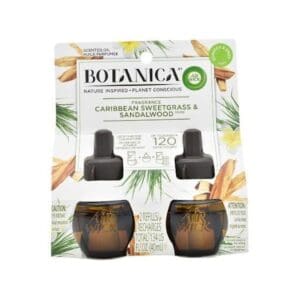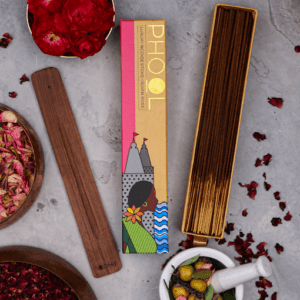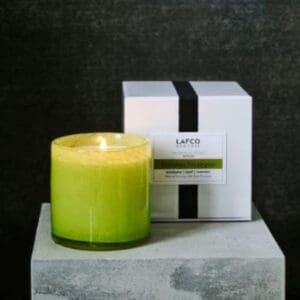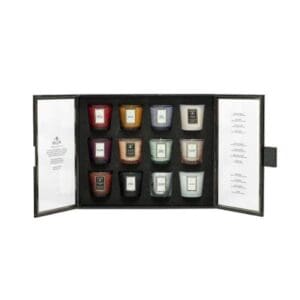In the latest 2022 Sustainability Barometer, Indians’ foremost environmental concern is air quality. Despite this, 41% of Indians do not use air care products. As the home remains central to consumers’ lives – whether for work, exercise or relaxation – there will be a willingness to invest in air care products that make the home atmosphere safer and more pleasurable. Here are the ways brands can capture consumer interest in this category.
1. Offer air-cleaning benefits to attract non-users
While consumer anxiety around air pollution has always been high, pandemic-led health concerns have brought the spotlight on not just outdoor pollution but indoor air quality as well. Offering functional claims such as anti-pollution, detoxifying, air cleaning and disinfecting can engage non-users.
Botanica By Air Wick Caribbean Sweetgrass & Sandalwood Scented Oil Refill (Source: Mintel GNPD)
And as sustainability becomes increasingly important to consumers, opportunities exist to modernise traditional formats such as incense sticks and camphor by linking them to sustainable ingredients, health and safety. For example, Reckitt Benckiser’s Botanica by Air Wick is a range of aircare products made with fewer but higher-quality ingredients that are naturally derived and responsibly sourced. The products come in recycled and recyclable packaging. Using ‘natural’ proposition conveys safety and can help allay consumer concerns about inhaling chemicals from using aircare products. Original handmade recipes can also help amplify the ‘clean’ aircare positioning.
2. Position as a permissible luxury for Millennials
Amongst Millennials aged 25-40, aircare has moved from being just a functional need-based product that neutralises odour to a more emotionally rewarding, mood-enhancing item (34% vs 31% of the total sample). In addition to unique concept fragrances, brands can provide immersive experiences which engage different senses. One example is D.S Durga’s Holy Ficus Candle which has a curated playlist on Spotify to complement the mood associated with the scent.
D.S. & Durga’s playlist on Spotify to match the mood of Holy Ficus (Source: Spotify)
Translating localism into aircare products can also appeal to this demographic who find strong interest in their cultural heritage, as explored in the Mintel Trend Driver Identity. Phool is an Indian direct-to-consumer brand that modernises the traditional Indian incense stick by upcycling floral waste from temples to create premium fragrance-based products.
Phool’s incense sticks (Source: Phool)
While burning incense during prayers is a familiar ritual that many still practice, Phool realised that modern Millennials are just as likely to light up a tea tree/lemongrass cone while doing yoga, meditating or just relaxing. This led Phool to develop organic, zero-waste incense products with scents ranging from citronella to eucalyptus to the more traditional ones like rose and nargis.
3. Provide a mental escape to Gen Z
Aircare has seen elevated interest among Gen Z consumers aged 18-24, with 36% having used up to eight different products in their repertoire in the last six months prior to January 2022. A further 47% of them are particularly drawn to incense sticks/dhoop. Unlike Millennials, these younger consumers show a rather personal approach toward usage.
LAFCO Office Candle (Source: LAFCO)
Aircare products stand to benefit from focusing on emotional-health-related benefits to boost adoption among Gen Zs. For example, LAFCO Office Candle features rosemary and eucalyptus to clear the mind. Incorporating earthy, fresh scents with a lingering fragrance can also create a vibrant atmosphere to help awaken and focus the mind when studying or attending online classes.
Voluspa uses colour to communicate fragrance (Source: Voluspa)
Being digitally native, brands will need to go beyond traditional descriptors and incorporate visual and audio cues to effectively communicate scent with this cohort. For example, Voluspa released scents with matching coloured bottles, using the amber glass vessel for its Baltic Amber fall candle.
What we think
Consumers have spent a more significant amount of time in their homes over the last two years. While a clean home is a safe home, consumers woke up to the emotional rewards of fresh, tidy space. Overall, this means there is an increased consumer demand for aircare as it has come to be seen as therapeutic. Health benefits and wellness claims are prominent as Indian consumers prioritise clean air (29%) and mood enhancement (31%) in their aircare products. As such, to engage Indian consumers, the right balance is essential in new product development to address these needs and provide value for their money.

























![[WATCH] Trending ingredients to watch: Hydroxydecyl Ubiquinone](https://www.mintel.com/app/uploads/2023/06/Hydroxydecyl-Ubiquinone-艾地苯_Digital_Blog_1000x305.jpg)



















